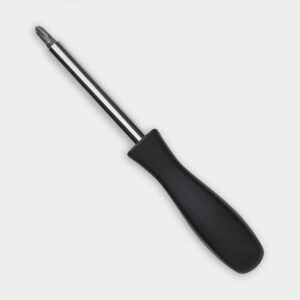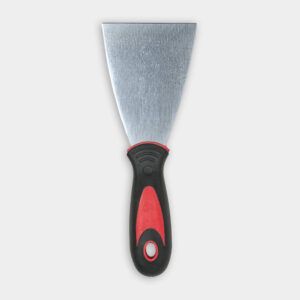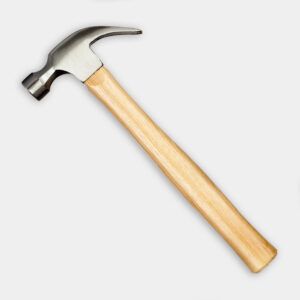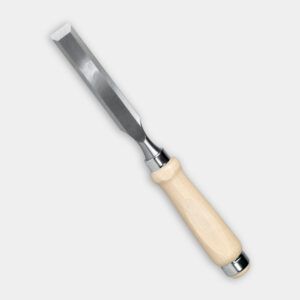We may be compensated if you purchase through links on our website. Our team is committed to delivering honest, objective, and independent reviews on home products and services.
Project details
Skill
Cost
Estimated Time
Mortise locksets are a hallmark of older, high-quality doors. Unlike modern cylindrical locks, they’re set into a pocket—or mortise—cut into the door’s edge. This allows for a more secure and versatile locking mechanism.
However, these complex mechanisms can sometimes jam, loosen, or develop other issues. In the video above, This Old House carpenter Nathan Gilbert repairs a century-old mortise lockset, showcasing the intricate components and steps involved.
Components of a Mortise Lockset
A mortise lockset consists of several key components.
- Cylinder: The keyed component that operates the lock
- Deadbolt: Provides additional security with a separate, more secure bolt
- Faceplate: Visible plate on the door’s edge housing the latch and deadbolt
- Latch: A spring-loaded bolt that keeps the door closed
- Lever or knob: The handle used to retract the latch and open the door
- Lockbox: Fits into the pocket in the door and houses the internal mechanisms
Common Issues with Mortise Locksets
Mortise locks can develop various problems over time:
- Keys that no longer work
- Loose or spinning doorknobs
- Misaligned or damaged components
- Sticking or difficult operation
- Worn-out internal mechanisms
Tools
Here’s what you’ll need to repair your mortise lockset:
Removing the Mortise Lockset
Whenever removing parts from the lockset or the door, place them in a small container. These parts can be easy to lose and expensive to replace. Follow these steps to remove the lockset:
- Remove the set screw holding the key cylinder in place. This is usually on the jamb-side of the lockbox, highest and closest to the keyed side of the cylinder.
- Unscrew and remove the thumb turn from the interior side. The cylinder should spin loose.
- Carefully extract the key cylinder.
- Remove the set screw securing the doorknob and slide off both knobs.
- Remove the exterior half of the doorknob and its shaft passing through the lock, unscrew the faceplate if needed, and remove the entire mortise lockbox from the door.
Disassembling the Lockset
Now you can disassemble the removed lockset. This allows a closer look at all parts without the door frame obstructing your view.
- Place the lockset on a clean, flat surface. Gilbert recommends taking a photo of the assembled lockset for reference.
- Remove the screws holding the cover plate.
- Carefully lift off the cover, keeping track of any small parts that may fall out.
- Inspect all internal components for wear, damage, or misalignment. There are many parts in a mortise lockbox, so be sure to perform a thorough inspection.
Identifying and Replacing Worn Lockset Parts
After disassembly, several issues might become apparent, like the following:
- Broken or weakened springs
- Corroded or bent internal levers
- Parts floating loosely within the lockbox
- Rounded or damaged latch or deadbolt
- Worn or damaged thumb turn cam
Look for exact matches for replacement parts whenever possible. A locksmith specializing in antique hardware can help you get the right parts or recommend suitable alternatives. You may be able to find some parts online.
Lubricating and Reassembling the Lockset
Proper lubrication is key to smooth operation. Gilbert recommends lubricating any moving parts or parts that could cause friction. This can extend the life of your lock.
- Clean all parts thoroughly with a degreaser.
- Apply white lithium grease to all moving parts and pivot points.
- Reassemble the lockset, referring to your photo if needed.
- Place the cover back on the lockbox and fasten it with the screws.
- Test the mechanism before reinstallation.
Reinstalling the Mortise Lockset
Survey the door for damage. Older doors can wear down with years of repeated locking and unlocking, so fill any stripped screw holes with the putty knife and wood putty. Allow it to dry before redrilling the holes.
Follow the earlier steps in reverse order to reinstall the lockset:
- Reinsert the lockbox into the door, but leave it loose.
- Carefully thread the lock cylinder into the lockbox until it is hand-tight before tightening the set screw on the jamb side of the lockbox.
- Reinstall the thumb turn on the inside of the door.
- Install the doorknobs and secure them with set screws.
- Test the lock to check for smooth operation.
Addressing Door Issues
Sometimes, the door itself may contribute to lock problems. Look for and address these common issues to keep the lock functioning properly.
- Adjust the door’s alignment in the frame if necessary.
- Fill and redrill stripped screw holes.
- Make sure the strike plate is properly aligned with the latch and deadbolt.
- Replace old weather stripping to ensure proper seal and fit.
- Sand down areas where the door rubs against the frame.
Maintaining Your Mortise Lockset
Regular maintenance will help your lockset last much longer.
- Adjust the door and strike plate alignment as needed.
- Avoid using excessive force when turning the key.
- Clean the keyway periodically to prevent debris buildup.
- Lubricate the lock once or twice a year with dry graphite powder.
- Tighten any loose screws promptly.
When To Call a Professional Locksmith
While homeowners can address many mortise lock issues, some situations warrant professional help:
- If the door requires significant repair or adjustment
- If you’re unable to disassemble or reassemble the lock
- When dealing with antique or historically significant hardware
- When replacement parts are unavailable or difficult to source





